Earlier this month, my last set of quilt show quilts for 2025 arrived back at home from the International Quilt Festival in Houston. I have had quilts in special exhibits at this show, but this was the first time I had pieces in the main contest. I was surprised to open the boxes to discover not one, but three judging sheets for each quilt. Apparently, each judge completes a sheet for each quilt. Let’s take a look at the quilts and what the judges had to say, then we’ll talk about the judging sheet format.
100 Days of Greenery
Category: Appliqué
Description: Photographs from the local botanical garden inspired this 100-day needle-turn appliqué quilt constructed to reveal linear areas of the background ombré fabric, creating a stained-glass-like effect.
Note: This quilt also received judging comments from QuiltCon 2024 and AQS Paducah 2025.


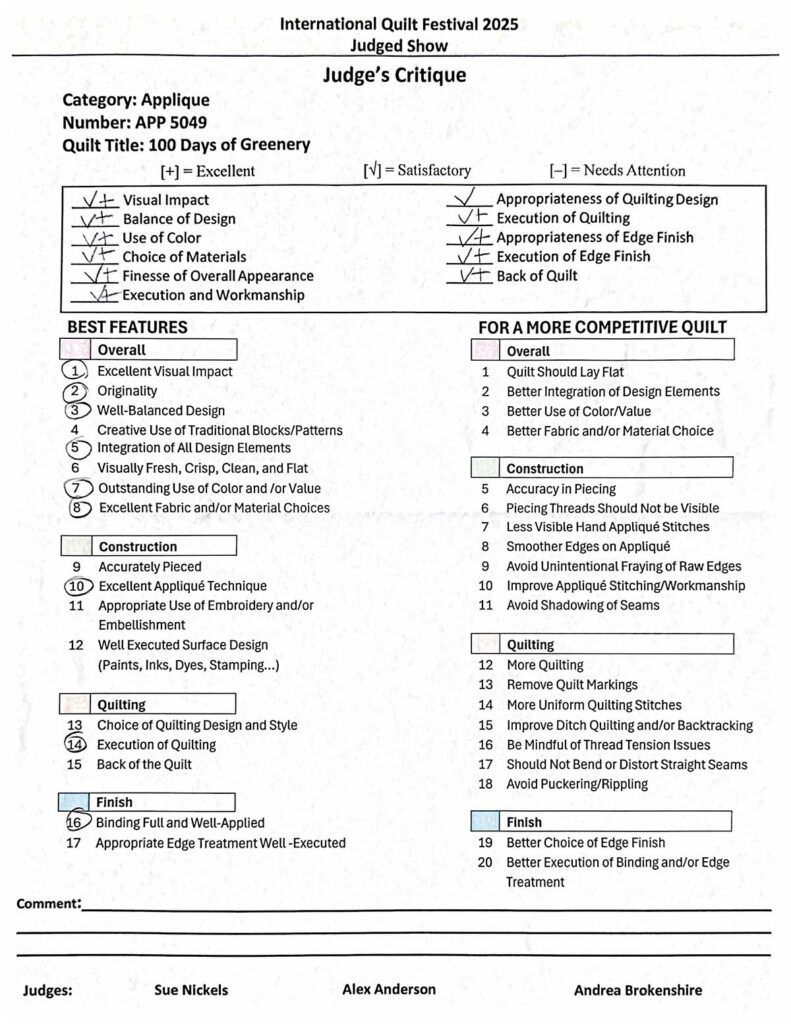

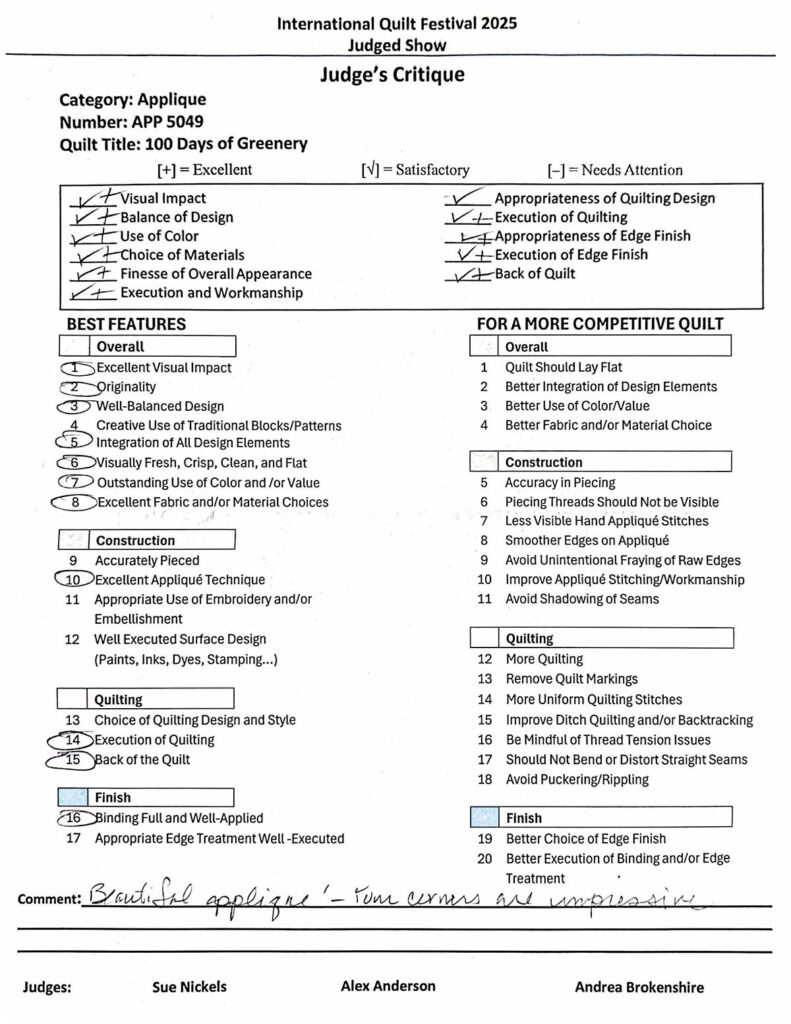
Next Verse Different Than the First
Category: Abstract
Description: After creating an improv quilt from start to finish in 100 days, I had a pile of fabric strips next to my sewing machine. These scraps joined other fabrics from my stash to create the quilt top for Next Verse, Different Than the First.
Note: This quilt also received judging comments from QuiltCon 2024 and AQS Paducah 2025.



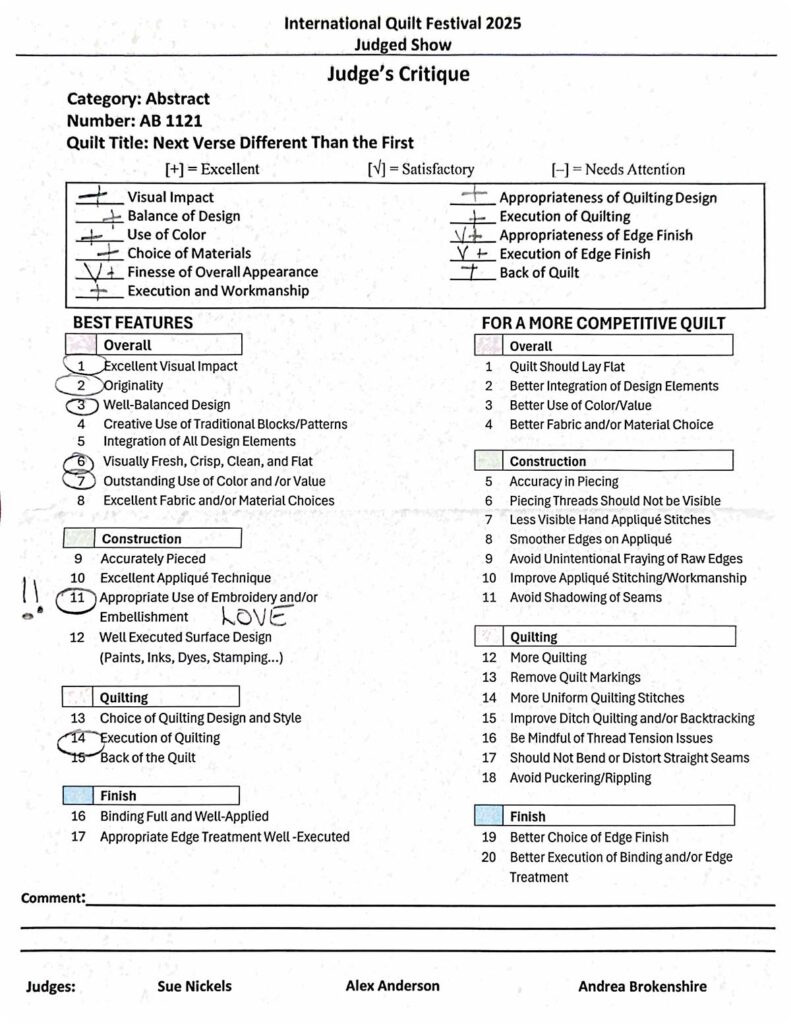
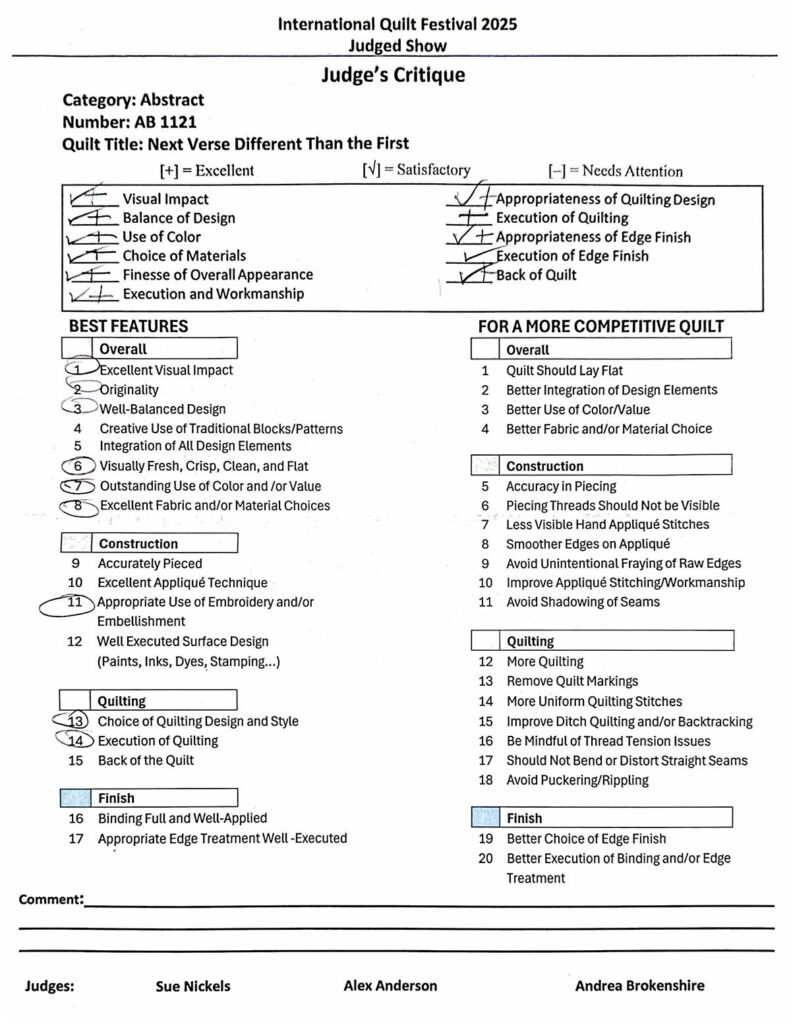
The Judging Sheets
As you can see from the sheets shared for each of my quilts, these judging forms rely primarily on standardised comments with space for optional specific notes. While I’m not generally a fan of “canned” comments the way they are typically used, I’m ok with these because:
- There are many comments on the sheet, and you can see them all. Having all the comments readily available to the judges gives you context for what they are looking for in the judging process.
- Receiving a separate sheet from each judge allows you to compare their ratings to see what each person thought were the strengths and weaknesses of your quilt.
- Because the comments don’t have to be written individually, the judges can easily give feedback in every area rather than offering 3-4 general comments.
We all would love a full analysis of every quilt we have in a show, but I recognise that time constraints will never allow this wish to come true. I think this type of judging sheet is a decent compromise that provides more information in an efficient way. Quantity can make up for some degree of specificity. If someone is making the effort to write individual comments, it’s a waste of everyone’s time to use predetermined comments. I’m fine with judges offering written comments only when they have something specific to say, especially when it’s combined with ratings for many aspects of the quilt and highlights the positives and negatives of each piece.
Quilt Show Judging Comments in General
Sharing judging comments helps demystify the process of entering a judged quilt show, so I’m happy to share the unedited feedback I received for all of the quilts I have entered into shows.
If you are interested in seeing past posts I’ve written about judging feedback, check out these posts:

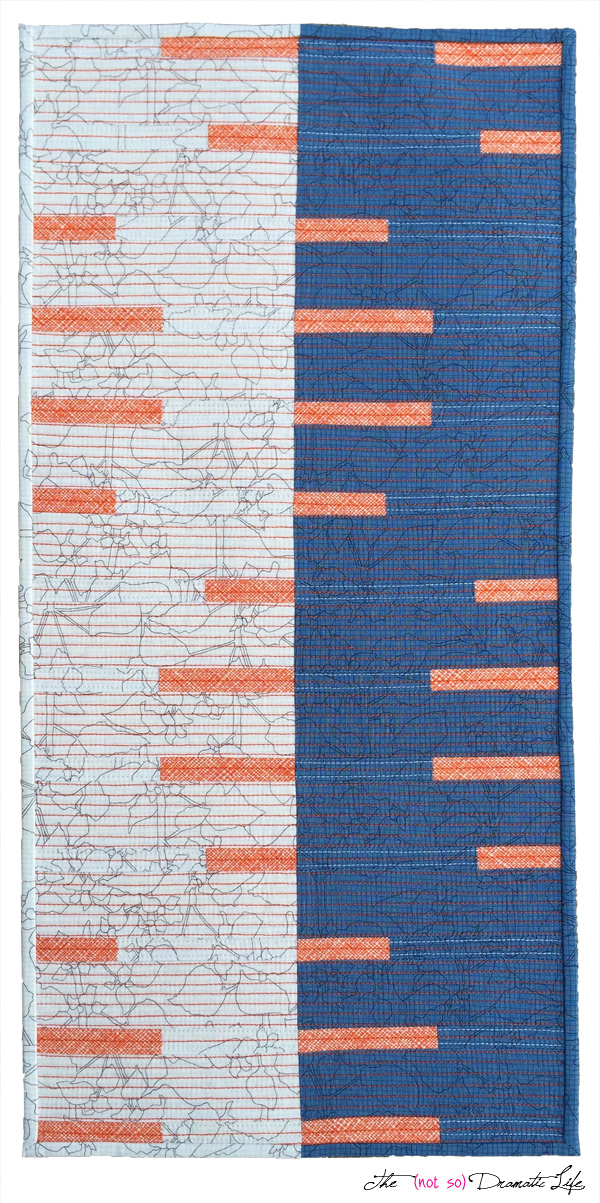
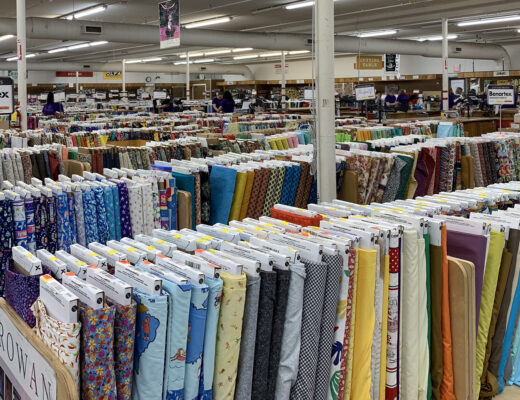


No Comments